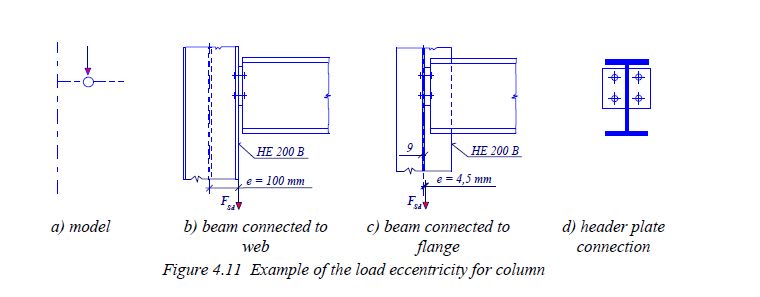Hi,
I'm looking at designing columns including the eccentricity acting on them by their connections. This is simple enough to understand for a simple pinned connection. However, for a moment connection, do you still need to allow for eccentricity since the connection isn't fixed to the shear centre?
Cheers
I'm looking at designing columns including the eccentricity acting on them by their connections. This is simple enough to understand for a simple pinned connection. However, for a moment connection, do you still need to allow for eccentricity since the connection isn't fixed to the shear centre?
Cheers

